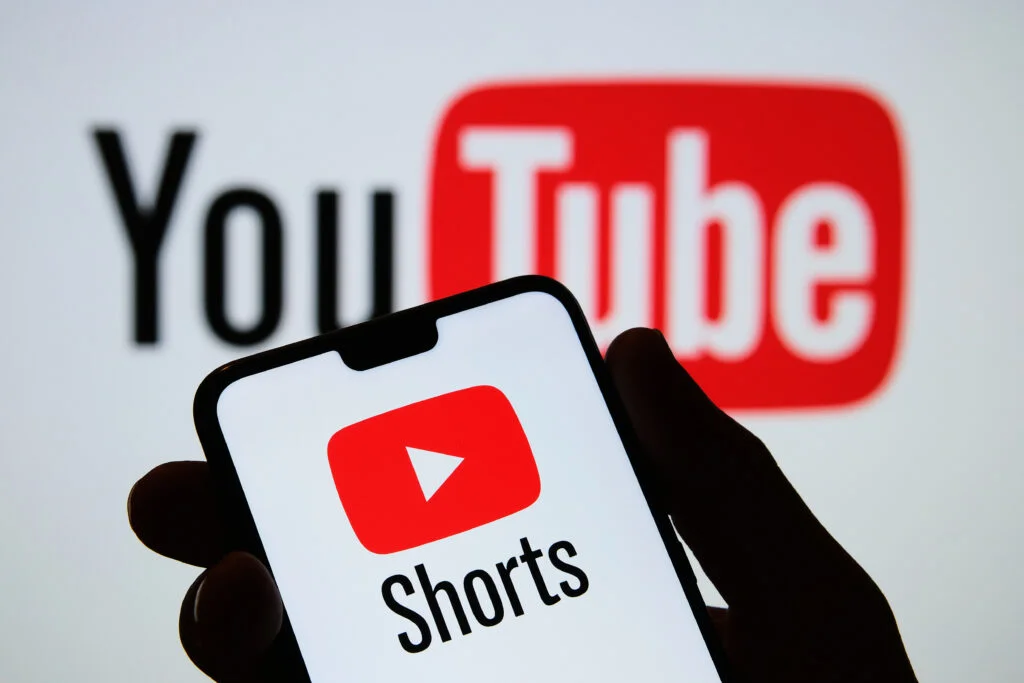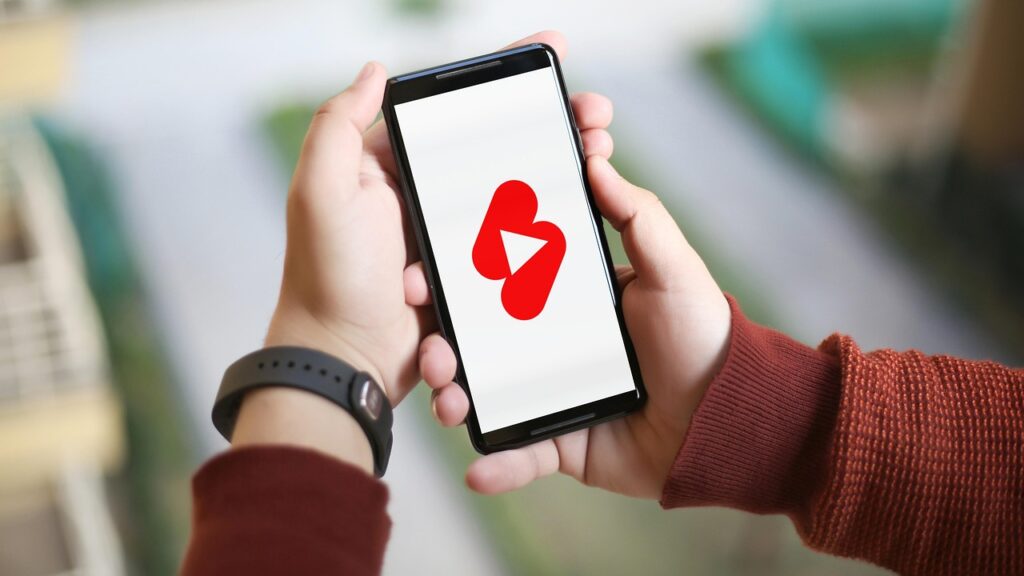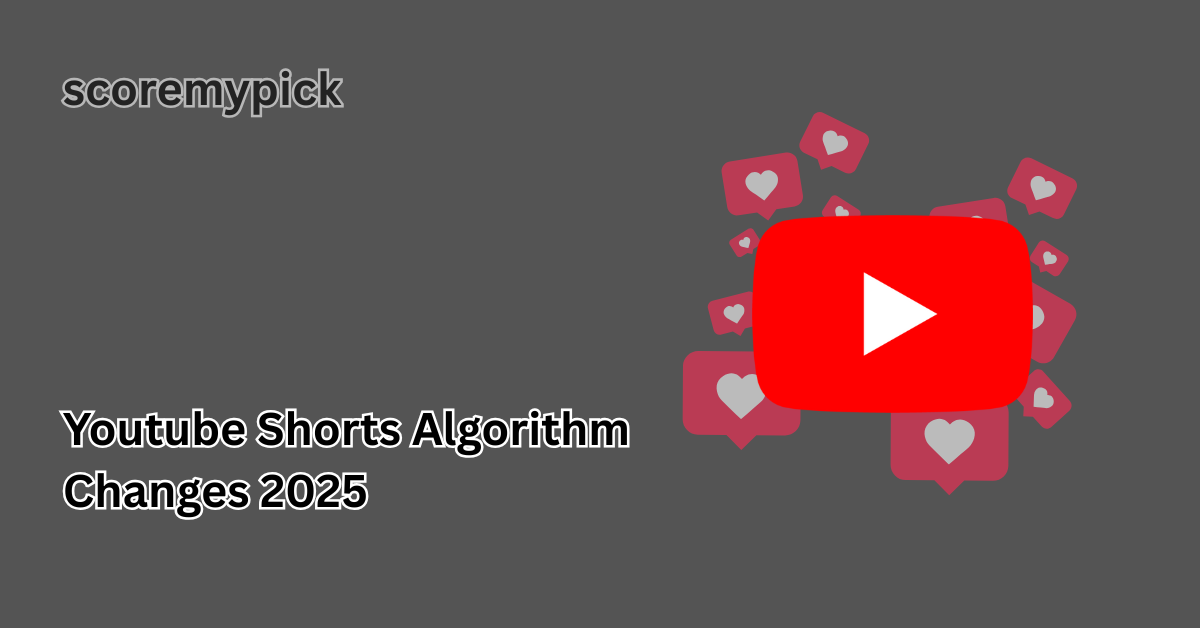YouTube Shorts is at a brand-new stage in 2025. What began as a miniature experiment has become a fundamental element of the platform, bringing in billions of daily views. There is, however, the thing that the Shorts algorithm has been transformed significantly this year.
Counting views, raising the bar on originality, among other changes, YouTube has undergone multiple changes that have a direct effect on growth, monetization, and content reach. It is no longer a choice to know about these shifts, but it is the difference between a video that vanishes into obscurity and one that goes viral in a night.
This paper dissects the current YouTube Single changes to the Shorts algorithm in 2025, verified update schedules, new ranker signals, policy changes, and tips to promote your Shorts to the fullest potential.
Understanding the YouTube Shorts Algorithm in 2025
According to the YouTube Shorts algorithm of 2025, the third pillar is viewer satisfaction, watch retention and authenticity of content. The platform is now more behavior-based in ranking, unlike in the past years, during which a large number of views could lead to mass recommendations.

YouTube officially confirmed this in January 2025, according to their Creator Insider updates, stating that Shorts are ranked first based on user behavior, customized on a user-by-user basis, i.e., the algorithm learns your engagement with similar content and delivers your video to the audiences that are most likely to watch the entire video.
Key elements the algorithm prioritizes in 2025 include:
- Average watch time per viewer: Longer retention equals more recommendations.
- Engagement depth: Likes, comments, shares, and replays are now heavier ranking signals.
- Viewer satisfaction surveys: YouTube has quietly expanded its in-app feedback tools, giving the algorithm better data on what viewers actually like.
- Originality check: Reused content is now flagged faster, reducing distribution for copied or AI-duplicated videos.
One of the biggest transformations this year is the fact that Shorts are now regarded as independent videos, not based on long-form videos. Shorts performance on your channel will not necessarily kick-start your long-form content, and vice versa.
Rather, YouTube has an individual recommendation funnel that applies to Shorts, and the criteria are the performance of each clip within the first 72 hours.
The first 72-hour gap is essential in 2025. Assuming that, in this time frame, your video has a high retention (over 70) and engagement, it is more likely to be promoted to the larger “For You” feed. In case of underperformance, its reach will be capped permanently.
In short: the 2025 Shorts algorithm isn’t just about views anymore — it’s about how much viewers care about your content. Creators who master engagement, structure, and originality will dominate this new landscape.
What Changed: Shorts View-Counting Update (March 31, 2025)
YouTube made a significant change to the way Shorts views can be counted on March 31, 2025. It was not a minor backend adjustment, but it redefined the way that videos go viral on the site.
In the past, each swipe or auto-play was registered as a view, regardless of whether the viewer viewed it for more than a second. However, now, a view is registered when the viewer views it for at least 3 seconds or engages in some action (such as pausing, liking or re-watching). The purpose of this change is to reward meaningful views and not accidental swipes.
Here’s how the new Shorts view-counting system works in 2025:
- Minimum 3 seconds watch required for a valid view.
- Replays count as additional views — but only if each replay crosses the 3-second mark.
- Pauses and slow scrolls are treated as positive engagement signals.
- Instant swipes (under 3 seconds) no longer count as views.
Why this matters: creators can no longer rely on “scroll traffic” to inflate their numbers. Instead, YouTube wants viewers to consume and engage with your content actively. This also affects the algorithm’s recommendation curve — if a video doesn’t maintain at least a 60–70% retention rate within its first 72 hours, its reach will likely stagnate.
For Shorts creators in 2025, this means:
- Opening hooks must be sharper to hold attention for 3+ seconds.
- Looping content and storytelling techniques are more valuable than ever.
- Inflated view counts from quick swipes are gone — only real engagement wins.
This update has leveled the playing field, making content quality and structure the new kings of virality.
Top Ranking Signals in 2025: Watch Time, Retention & Engagement
With the new algorithm, ranking signals in 2025 are clearer, more measurable, and more focused on real audience interest. YouTube officially highlighted three main drivers that now decide whether your Shorts will go viral or disappear in the feed:
1. Watch Time
The longer viewers stay on your video, the higher it ranks. The current average retention benchmark for viral Shorts is between 75%–90%. A 15-second video where viewers stay for 13 seconds will naturally outperform a 60-second clip that loses attention at 20 seconds.
2. Audience Retention & Completion Rate
Retention is one of the strongest ranking signals in 2025. YouTube’s system now measures how many viewers watch till the end. Videos with a completion rate above 80% within the first 72 hours are significantly more likely to enter mass distribution on the Shorts feed.
3. Engagement Depth
Likes and comments still matter, but replays and shares have gained new weight. YouTube treats a replay as an ultra-strong engagement signal, as it indicates your content was worth watching again.
Other subtle signals that now contribute to ranking:
- Subtitles and captions improve accessibility.
- Viewers clicking on your profile after watching a Short.
- Playlist additions or channel subscriptions triggered by a Short.
To sum it up: In 2025, the Shorts algorithm isn’t just showing your video to everyone — it’s showing it to the right people. And if those people stay, engage, and share, your content will rise fast.

Originality, “Inauthentic” Content Rules & Monetization Impact (July 15, 2025)
On July 15, 2025, YouTube introduced one of its most impactful Shorts policy updates yet, focusing on originality and content authenticity. This update wasn’t just about protecting creators — it directly affects who gets monetized and how widely their videos are recommended.
YouTube now actively deprioritizes inauthentic or reused content, including:
- Reuploads of other creators’ videos without meaningful edits
- AI-generated clips with no added creativity or commentary
- Compilations with minimal transformation (e.g., meme dumps, reaction-free edits)
- Lip-sync content copied from trending audio without originality
If the system detects your Shorts as inauthentic, here’s what happens in 2025:
- It won’t be recommended on the Shorts feed.
- It won’t be eligible for monetization through the YouTube Partner Program.
- It may get reduced visibility across your channel.
YouTube uses a combination of AI-powered content detection and manual review to enforce these policies. Creators are encouraged to add value, context, or transformation to any reused content to stay compliant.
This update ties directly to monetization. In 2025, only original or meaningfully transformed Shorts can earn from ad revenue and the Shorts Monetization Pool. YouTube has stated that channels with a consistent pattern of inauthentic uploads risk losing monetization eligibility entirely.
Tip for creators: Add personal commentary, visual edits, voiceovers, or storytelling layers to make your content unique. Authenticity isn’t just a guideline now — it’s a hard ranking factor.
Actionable Optimization: Hooks, Structure & Thumbnails for Shorts
Even with algorithm changes, one thing remains true: strong content strategy beats luck. In 2025, optimizing your Shorts for retention, clicks, and engagement is more technical and intentional than ever before.
Here’s a practical optimization checklist aligned with the current algorithm:
Start with a powerful hook (0–3 seconds)
Since views only count after 3 seconds, the opening moment must grab attention fast. Creators using movement, text overlays, or a bold first line have a 40% higher retention rate on average.
Structure your story
Shorts that follow a clear 3-part structure — hook, build-up, and punchline — outperform random, unstructured clips. Even 15-second videos benefit from tight storytelling.
Use scroll-stopping thumbnails
While Shorts often auto-play, custom thumbnails help boost CTR on channel pages, search, and external shares. A clear, bright, and emotionally expressive thumbnail increases click-through rates by up to 28%, according to YouTube Creator Analytics in mid-2025.
Experiment with length and loops
Shorter isn’t always better. While 15–30 seconds remains the sweet spot, looping structures — where the end transitions back to the beginning — can double replays, signaling strong engagement to the algorithm.
Add captions and strong CTAs
Around 80% of Shorts viewers watch without sound, so adding captions significantly boosts watch time. A short call-to-action (“Follow for Part 2” or “Watch till the end”) helps improve retention and engagement depth.
Creators who consistently apply these optimization strategies are seeing 2–4x better reach than those who rely solely on trends. In 2025, it’s not about posting the most — it’s about posting strategically.
AI Tools, New Features & The Future: What Creators Should Prepare For
As of October 2025, YouTube has made it clear that AI integration and personalization will be a major part of the Shorts ecosystem in the future. Instead of just recommending trending clips, the platform is now personalizing discovery at an individual level, matching specific viewer behaviors with creator content styles.
Here are the biggest future-facing changes shaping the Shorts landscape:
AI-Powered Recommendation System
YouTube has enhanced its algorithm to use predictive audience modeling, meaning it can anticipate what a viewer might want to watch next based on previous behavior, session duration, and content format. This allows niche creators to get discovered more easily — even without massive trending soundtracks or viral hashtags.
For example, if someone regularly watches fitness Shorts between 7–9 PM, the system can push relevant fitness creators at exactly that time. This is why posting time and consistency have become even more important in 2025.
Creator Tools & Smart Editing Features
YouTube has rolled out new AI tools that help creators edit, caption, and structure their Shorts directly inside the app:
- Auto-Caption Enhancer: Creates perfectly synced captions in seconds.
- Smart Beat Sync: Syncs your clips with audio transitions automatically.
- Highlight Detection: Identifies the most engaging part of your video for the opening hook.
These tools don’t just save time — they increase engagement quality, which is a direct algorithmic ranking factor.
Creator Monetization Upgrades
Alongside the authenticity rules, YouTube has expanded Shorts ad revenue sharing. As of Q4 2025, creators with 1,000+ subscribers and 10 million valid Shorts views within 90 days can join the Shorts monetization tier. AI-based ad placement also ensures higher CPM rates for engaging content, meaning creators with loyal audiences will earn more — even with fewer uploads.
Content Personalization & Community Building
The second move is occurring behind the scenes: YouTube is increasingly employing engagement clusters (teams of viewers who have similar interests) to scale creators to the correct micro-communities. Provided that your Shorts attract a niche, the algorithm is going to distribute your videos to those groups first, then push outward.
It implies that in 2025 and further on, the niche-oriented content makers can do better than generalists; the system will favor accuracy rather than chance.
Pro tip: Build your Shorts strategy around one strong niche, post consistently, and use YouTube’s AI tools to refine your videos for maximum retention. This aligns perfectly with the new recommendation model.
Final Thoughts
The YouTube Shorts algorithm in 2025 is smarter, stricter, and more engagement-focused than ever. Gone are the days when random reposts and fast trends could take a channel to the top.
Here’s a quick 2025 Shorts Success Checklist for creators:
✅ Strong 0–3 second hook to secure valid views.
✅ Maintain 70%+ retention in the first 72 hours.
✅ Prioritize originality to stay monetized and recommended.
✅ Use AI tools to enhance captions, timing, and storytelling.
✅ Focus on niche communities rather than chasing every trend.
This new algorithm will be hard initially- but for creators who know and plan wisely, it is a golden opportunity. Shorts is no longer a feature; it is an ecosystem that is catalyzing huge viewership.
Having learned these changes early, you will not only defeat the algorithm, but you will also make the algorithm do your job.
FAQs
What is the YouTube Shorts algorithm 2025?
The 2025 Shorts algorithm prioritizes retention, engagement, and originality, using AI to recommend content to the most relevant audiences.
How to go viral on YouTube Shorts in 2025?
Hook viewers in the first 3 seconds, maintain 70%+ retention, post consistently, and use AI tools to optimize storytelling and engagement.
How long can YouTube Shorts be in 2025?
YouTube Shorts in 2025 can be up to 60 seconds long.
Has the YouTube algorithm changed in 2025?
Yes, in 2025, YouTube updated its algorithm to emphasize meaningful watch time, originality, and personalized recommendations.

